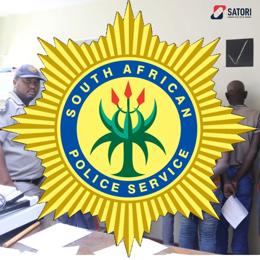Image created by AI
South Africa's Troubling Tide of Lost State Firearms Fueling Criminal Activities
Amidst the growing concern for public safety in South Africa, a staggering 1,800 state-owned firearms are estimated to be lost or stolen each year, falling into the criminal underworld and propelling a rise in firearm-related violence. With a total of 2.2 million firearms owned by 502 state entities, less than 30% are accounted for by the South African Police Service (SAPS) and South African National Defence Force (SANDF), leaving a vast majority vulnerable to mismanagement and illicit distribution.
Jenni Irish-Qhobosheane, a researcher at the Global Initiative Against Transnational Organised Crime, addressed this alarming issue at an Institute for Security Studies (ISS) seminar, revealing the failure of various state entities to report their lost or stolen firearms to the Central Firearms Registry (CFR). This negligence has grave implications, as even a conservative estimate points to 18,000 firearms lost over a decade. Concurrently, the average number of daily firearm-related murders has risen to 34, underscoring the urgency of this crisis.
KNYSNA - A report on consultations between SANParks scientists, South African and international wildlife groups, and communities, due to be released next year, a significant step towards a decision being made on whether or not to reintroduce elephants into the Knysna Forest.
While the SAPS is diligent in reporting lost or stolen police-issue firearms, there is a significant lapse in transparency regarding the loss or theft of weapons under their jurisdiction, notably those kept for evidence or handed in during amnesty periods. This was highlighted by the disappearance of 357 firearms from evidence stores, a discrepancy further exacerbated by the notorious case where 178 firearms were unaccounted for at the Norwood police station, only coming to light amidst a separate criminal investigation.
The phenomenon extends beyond the police force. In 2016, the conviction of Colonel Chris Lodewyk Prinsloo underscored the severity of the situation; as a caretaker of an SAPS armoury, he confessed to illicitly selling thousands of firearms to gangs and other criminal factions. The fear is that this is merely the tip of the iceberg, intimating systemic corruption within the armor.
The situation is not restricted to firearms, with alarming lapses also noted in the management of ammunition. Astonishingly, the police lost 9 million rounds of ammunition between 2014 and 2019, and the SANDF reported the loss of significant amounts, albeit without specific figures.
These revelations prompt a comprehensive review of the systems governing the accountability and management of state-owned firearms. The CFR's inefficacies have been spotlighted, underscoring the need for a robust overhaul and stringent oversight mechanisms. Surveillance and accountability must be improved, with calls for unannounced inspections, better inter-departmental systems, and stricter penalties for firearms-related offenses.
Addressing this systemic failure requires an integrated strategy encompassing accurate crime statistics, enhanced forensic capabilities, and strategic law enforcement collaboration. With an approximate 60% recovery rate for licensed civilian firearms lost or stolen within the past decade, it is clear that dedicated and organized resources can yield results. However, these efforts must be focused and sustained to make a tangible difference.
The critical nature of this issue, as articulated by ISS experts and government officials, highlights the immediacy with which South Africa must confront the inflow of illegal firearms. With concerted effort, improved regulation, and active enforcement, the surging tide of firearm-related crime in South Africa can, and must, be stemmed.










